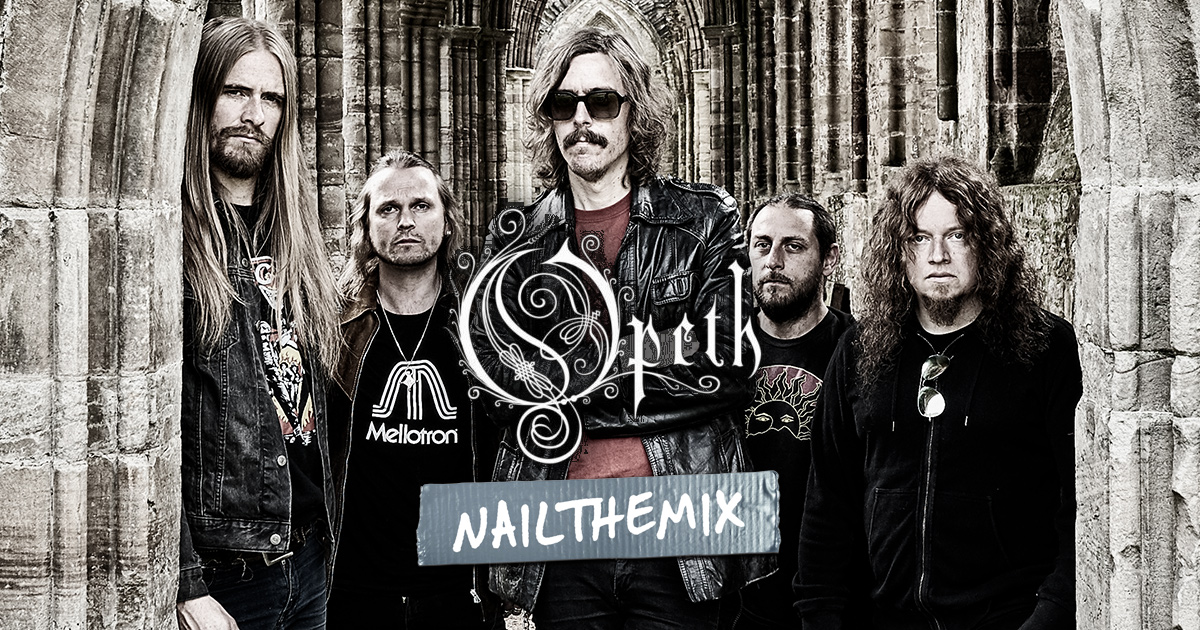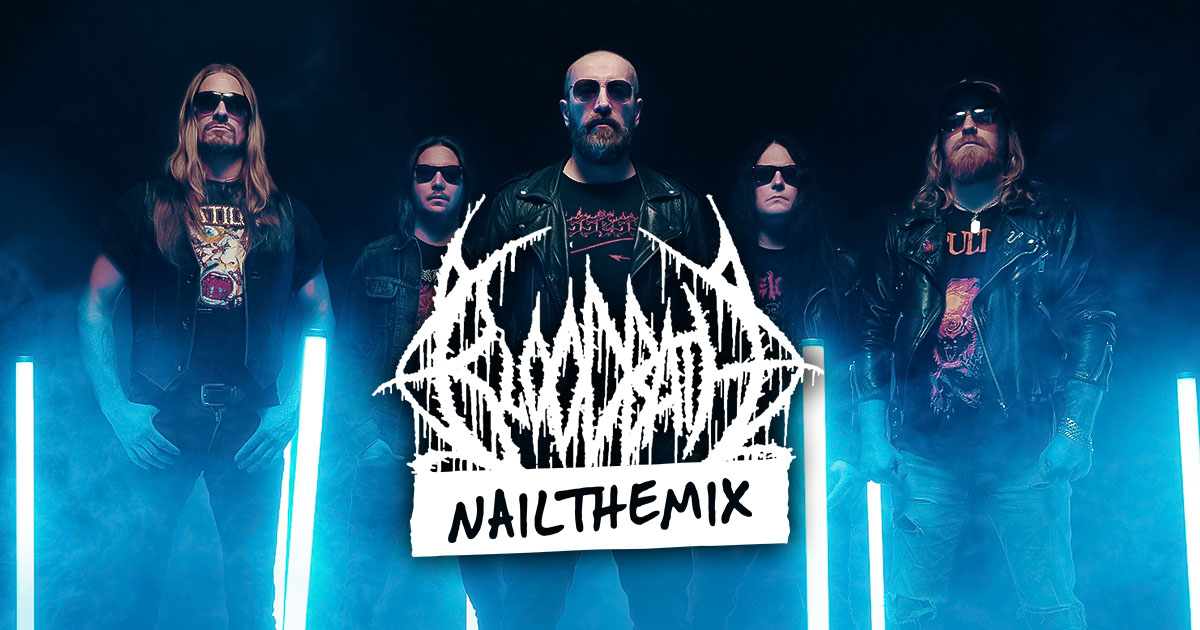
The Finer Points Of Opeth Drums w/ Jens Bogren
Nail The Mix Staff
Let’s be real, mixing toms in a dense metal track can be a serious headache. Getting them to punch through walls of guitars without sounding thin, clicky, or taking up too much space is a delicate balance. When you’re dealing with a prog-metal titan like Opeth, with five toms in the kit, that challenge gets even harder.
We got a front-row seat as legendary producer Jens Bogren (Arch Enemy, Devin Townsend, Kreator) tackled the toms from an Opeth session. He breaks down his entire process, from dealing with mics he’s not crazy about to creative panning and aggressive, musical processing. Here are the world-class techniques he used to make these toms slam.
The Foundation: Mic Choice and Panning Strategy
Before you even touch an EQ, your source tone and placement in the stereo field set the stage for everything else. Jens has some strong opinions and killer tricks for both.
Choosing Your Weapon: Tom Mics
The mics used on this session were AKG C535 condensers. Jens noted that while he used them a lot in the past, he’s not the biggest fan of them for toms anymore. He found they had a “plastic” quality in the high-end and could sometimes overload (“fart out”) from the sheer air pressure of a tom hit.
This highlights a crucial point: your mic choice drastically affects your mixing workflow. Jens’s two go-to tom mics sit on opposite ends of the spectrum:
- Sennheiser MD 421: The classic dynamic mic choice. According to Jens, this gives you that tight, focused “rock tom” sound. It often requires more processing—he mentioned having to scoop out mids and add a lot of high-end to get the attack he wants.
- CAD M179: A large-diaphragm condenser. This is the other extreme, providing a very big, full, and detailed sound that might be perfect for certain tracks but overwhelming for others. Condensers like this typically don’t need (or can’t handle) much top-end boosting.
The takeaway? Know what your mics are giving you. A dynamic like the 421 will give you a great starting point for an aggressive, processed metal sound, while a condenser will give you a more natural, sonically rich tone that needs a different approach.
Placing Toms in the Stereo Field
How do you pan five toms? Jens’s method is all about feel, not rigid rules. He doesn’t bother trying to match the panning to what he hears in the overheads. Instead, he positions them where they make the most musical sense for the song.
Here are his key panning strategies:
- Avoid the Center: Never pan a tom dead center. It will inevitably clash with the snare drum during a fill, creating a muddy, problematic center image.
- Automate Panning: This is a killer pro move. For different fills, Jens will sometimes automate the panning of the toms to create a wider, more interesting stereo spread that serves the specific drum part.
- Create “Phantom” Stereo: If a drummer is playing a fast pattern on two toms that are physically on the same side of the kit (like a 14” and 16” floor tom), he’ll sometimes pan one of them over to the opposite side of the mix. This creates an exciting stereo sensation from a mono source.
Shaping the Sound: EQ and Compression
With a solid foundation, it’s time to shape the tone. For these Opeth toms, Jens had to do some problem-solving before he could get to the creative stuff.
Surgical EQ to Tame Problem Frequencies
That “plastic” sound from the condenser mics was the first thing to go. To fix it, Jens reached for the SSL E-Channel EQ and did something he says he normally avoids: he used a low-pass filter (high cut) on the toms. This is a perfect example of breaking your own rules to serve the sound.
Because the SSL filters have a famously gentle, wide slope, he could pull the filter down significantly to tame that harshness without making the toms sound dull. The lesson? Use your ears, not the numbers.
For the rest of the EQ, he wanted a more “Led Zeppelin” vibe rather than a super-scooped modern metal sound. This meant carefully pulling out some problematic mids but also pushing other mid-frequencies to retain body and warmth. This is one of many EQ strategies for mixing modern metal that can make or break your drum sound.
Heavy Compression for Punch and Consistency
To get the toms to be powerful and even, Jens used the classic SSL Channel Compressor. His approach was direct and aggressive, showing how metal compression is about more than just controlling dynamics—it’s about shaping the envelope of the sound.
Here are his go-to settings for toms:
- Attack: Fastest setting. This clamps down immediately on the transient, controlling the initial peak.
- Release: Fastest setting. This lets the compressor reset quickly so it’s ready for the next hit in a fast fill.
- Ratio: A moderate setting.
- Threshold: This is where the magic happens. He cranked the threshold down until he was seeing up to 10dB of gain reduction. This smashes the dynamics, bringing up the sustain of the tom and making every single hit, from ghost notes to cannon shots, incredibly consistent and powerful.
The Pro Mindset: Mixing in Context
Perhaps the most valuable tip Jens shared was a philosophical one: try not to solo listen too much.
He admits it’s a tough rule to follow, even for him. He solo’d the toms in this session to diagnose and fix that “plastic” sound. But the goal should always be to make your mixing decisions in the context of the full track. A tom that sounds perfect in solo might be completely lost or, worse, clash horribly with the guitars and bass. Hearing how your EQ and compression moves affect the entire mix is the only way to know if you’re making the right call.
See the Master at Work
These techniques are a fantastic roadmap for getting powerful, musical toms in your own mixes. From creative panning and problem-solving EQ to shaping attitude with heavy compression, these are the moves that separate the pros.
Opeth on Nail The Mix
Jens Bogren mixes "Heir Apparent"
Get the Session
But reading about it is one thing. Seeing it happen is another level entirely. In the full Opeth mixing session on Nail The Mix, you can watch Jens Bogren apply these concepts and many more as he builds the entire mix for this epic track from scratch.
If you’re ready to go beyond presets and see how world-class producers get their signature sounds, check out Nail The Mix. You’ll get access to the actual multi-tracks from bands like Opeth, Gojira, and Periphery and watch the original producers mix them live, explaining every single decision. It’s time to unlock your sound and learn from the very best in the business.
Get immediate access to the Opeth session and multi-tracks here!
Get a new set of multi-tracks every month from a world-class artist, a livestream with the producer who mixed it, 100+ tutorials, our exclusive plugins and more
Get Started for $1






